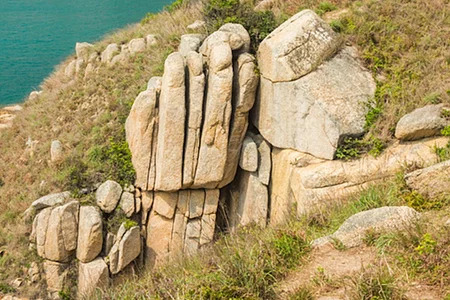Estimated reading time: 9 minutes
Table of contents
- Historical Significance of the Danube River
- Geographical Overview
- Danube River Map
- Danube River Basin
- Hydrology
- Economic Importance
- Hydroelectric Power and Industrial Use
- Cultural Significance: The Blue Danube
- Environmental Concerns and Conservation Efforts
- Danube River Tourism
- Castles, Fortresses, and Historic Sites
- Danube National Parks and Wildlife
- Conclusion
- Test Your Knowledge with MCQs
- FAQs
- You Might Also Like
The Danube River, the second-longest river in Europe after the Volga, is a natural marvel that weaves its way through the heart of the continent. Rising in the Black Forest mountains of western Germany, it flows for about 1,770 miles (2,850 km) before emptying into the Black Sea. This iconic river passes through ten countries—Germany, Austria, Slovakia, Hungary, Croatia, Serbia, Bulgaria, Romania, Moldova, and Ukraine—linking diverse cultures, economies, and ecosystems. The Danube River Map reveals its vastness and the significance it holds for these nations.
Historical Significance of the Danube River
The Danube River has played a crucial role in the development of Central and Southeastern Europe. Historically, its banks were lined with castles and fortresses, marking the boundaries between empires. It served as a critical commercial highway and a strategic military route. From ancient Roman times to the Middle Ages, the river has seen numerous battles and been a witness to the rise and fall of great civilizations. The famous Roman Empire patrolled its waters, establishing settlements such as Vindobona (modern-day Vienna) and Aquincum (modern-day Budapest).
In the 21st century, the river continues to serve as an essential trade artery, facilitating the transportation of goods and fostering economic growth in the region. The national capitals of Vienna, Budapest, and Belgrade thrive along its banks, highlighting the river’s lasting importance in European history.
Geographical Overview
The Danube River’s journey begins in the Black Forest of Germany, where two small streams, the Breg and Brigach, unite near the town of Donaueschingen. From there, the river meanders northeastward, carving through the landscape and connecting a wide variety of ecosystems.
Danube River Map
The Danube River Map provides a visual representation of the river’s course, highlighting its interaction with various geographical features. From the Austrian Alps to the Carpathian Mountains, and ultimately, the Black Sea, the map showcases the river’s importance as a connector between western and eastern Europe.

The river is traditionally divided into three sections:
1. Upper Danube: Stretches from the river’s source in Germany to the Hungarian Gates Gorge. This section features narrow valleys and steep banks as the river navigates its way through the Bavarian Plateau and Austrian territories.
2. Middle Danube: Extends from the Hungarian Gates to the Iron Gate, a spectacular gorge that forms the border between Serbia and Romania. Here, the river transforms into a broad, slow-moving body of water that traverses plains and picks up numerous tributaries.
3. Lower Danube: Flows from the Iron Gate to the Danube Delta at the Black Sea. This section is characterized by wide plains, shallow depths, and numerous islands.
Danube River Basin
The Danube River basin covers an area of approximately 315,000 square miles (817,000 square kilometers), making it one of the largest river basins in Europe. This vast area encompasses a diverse range of ecosystems, from alpine forests to fertile plains, and supports a variety of wildlife.
The basin expands unevenly along the river’s length, with notable expansions at confluences with tributaries like the Inn, Drava, Sava, and Tisza rivers. The right-bank tributaries, fed by the Alps and other mountainous regions, contribute the majority of the river’s water.
Hydrology
The hydrology of the Danube River is influenced by the diverse landscapes it traverses. The river’s water levels and flow rates vary greatly depending on the season and region. Snowmelt from the Alps results in peak water levels in June, while the middle basin experiences two peaks—one in April and another in June.
The Danube Delta, where the river meets the Black Sea, is a dynamic and ever-changing system. This delta is constantly growing as the river deposits sediment at its mouth, extending the land into the sea by about 24 to 30 meters annually. The delta is home to a maze of smaller channels, lakes, and wetlands, which support a rich variety of flora and fauna, including some endangered species.
Economic Importance
The Danube River is a critical economic asset for the ten countries it flows through. It serves as a major transportation route for goods, with key ports such as Vienna, Bratislava, Budapest, and Belgrade facilitating trade between Western and Eastern Europe. The river connects to other European waterways via the Main-Danube Canal, completed in 1992, which links the Danube to the Rhine and the North Sea.
Hydroelectric Power and Industrial Use
The Danube River is also a significant source of hydroelectric power, particularly in its upper course. Dams and power stations have been constructed along the river, most notably the Iron Gate Dam on the Serbia-Romania border. This project, one of the largest hydroelectric systems in Europe, not only generates electricity but also improves navigation along the river.
In addition to power generation, the Danube provides water for industrial use and irrigation. However, pollution from industrial activities and agriculture has posed significant challenges, particularly in the lower reaches of the river. Efforts are underway to reduce pollution and protect the river’s ecosystems, but the task remains daunting.
Cultural Significance: The Blue Danube
The Danube River holds a special place in European culture. One of the most famous pieces of music inspired by the river is Johann Strauss the Younger’s waltz, *An der schönen, blauen Donau* (The Blue Danube), composed in 1867. This waltz has become synonymous with Vienna and is celebrated worldwide.
The river has also inspired countless legends, songs, and works of literature. In Romanian folklore, the Danube is often personified as a life-giving force, while in Greek mythology, it was considered a gateway to the underworld.
Environmental Concerns and Conservation Efforts
Despite its beauty and importance, the Danube River faces significant environmental challenges. Pollution from agricultural runoff, industrial waste, and untreated sewage has severely impacted water quality in many areas, particularly in the lower basin.
Efforts to clean up the river have been ongoing, with international agreements such as the Danube River Protection Convention aiming to reduce pollution and promote sustainable management of the river’s resources. The Danube Delta, a UNESCO World Heritage Site, is a focal point of these conservation efforts, as it is home to many endangered species and serves as a critical stopover for migratory birds.
Danube River Tourism
The Danube River is a popular destination for tourists seeking to explore its rich history and natural beauty. River cruises offer travelers the opportunity to visit some of Europe’s most iconic cities, including Vienna, Budapest, and Belgrade, while enjoying the scenic landscapes that line the river’s banks.
Castles, Fortresses, and Historic Sites
Along the Danube, travelers can visit numerous castles and fortresses that tell the story of Europe’s turbulent past. In Hungary, the Visegrád Castle offers stunning views of the river and the surrounding hills, while in Austria, the Melk Abbey is a magnificent example of Baroque architecture perched on a cliff overlooking the river.
Danube National Parks and Wildlife
For nature lovers, the Danube River offers a wealth of opportunities to explore diverse ecosystems. The Danube-Auen National Park in Austria is home to one of the last remaining wetlands in Europe, while the Iron Gates Natural Park in Romania and Serbia features dramatic gorges and unique wildlife.
In the Danube Delta, visitors can explore the labyrinth of channels and lakes by boat, observing a variety of bird species, including pelicans, herons, and eagles.
Conclusion
The Danube River is more than just a body of water—it is a symbol of Europe’s history, culture, and natural beauty. As the river continues to play a vital role in the economic and environmental health of the continent, efforts to protect and preserve it are more important than ever.
From the source in Germany’s Black Forest to the expansive Danube Delta in Romania, the river connects ten countries and supports millions of people. Whether through its role in trade, its cultural significance, or its natural beauty, the Danube River will continue to shape Europe for centuries to come.
Test Your Knowledge with MCQs
Here are 15 MCQs based on the Danube River, with answers provided at the end.
1. The Danube River flows through how many countries in Europe?
a) 8
b) 10
c) 12
d) 14
2. Which of the following countries is not located along the Danube River?
a) Germany
b) Austria
c) Italy
d) Hungary
3. Where does the Danube River originate?
a) Alps
b) Black Forest, Germany
c) Carpathian Mountains
d) Dinaric Alps
4. Into which sea does the Danube River ultimately flow?
a) Mediterranean Sea
b) North Sea
c) Baltic Sea
d) Black Sea
5. Which capital city is located on the banks of the Danube River?
a) Berlin
b) Vienna
c) Paris
d) Rome
6. The Danube River is the second-longest river in Europe. What is the longest?
a) Volga River
b) Rhine River
c) Elbe River
d) Seine River
7. Which UNESCO World Heritage Site is associated with the Danube River?
a) Wachau Valley, Austria
b) Loire Valley, France
c) Stonehenge, UK
d) Historic Centre of Florence, Italy
8. What is the approximate length of the Danube River?
a) 1,200 km
b) 2,850 km
c) 3,650 km
d) 4,000 km
9. Which of the following cities is not situated along the Danube River?
a) Budapest
b) Belgrade
c) Bratislava
d) Madrid
10. The Danube River serves as a natural border between which two countries?
a) Austria and Switzerland
b) Romania and Bulgaria
c) Germany and Italy
d) Serbia and Slovenia
11. Which of the following is a major tributary of the Danube River?
a) Seine River
b) Sava River
c) Thames River
d) Elbe River
12. The Danube River Basin is home to how many different countries?
a) 15
b) 19
c) 22
d) 25
13. Which famous river cruise route includes the Danube River?
a) Paris to Normandy
b) Amsterdam to Budapest
c) Rhine Valley
d) Venice to Croatia
14. The Iron Gates, a famous gorge, is located along the Danube River between which two countries?
a) Hungary and Austria
b) Romania and Serbia
c) Germany and Slovakia
d) Croatia and Slovenia
15. The Danube Delta is one of the largest wetlands in Europe and is located in which country?
a) Austria
b) Hungary
c) Romania
d) Germany
Answers:
1. d) 14
2. c) Italy
3. b) Black Forest, Germany
4. d) Black Sea
5. b) Vienna
6. a) Volga River
7. a) Wachau Valley, Austria
8. b) 2,850 km
9. d) Madrid
10. b) Romania and Bulgaria
11. b) Sava River
12. b) 19
13. b) Amsterdam to Budapest
14. b) Romania and Serbia
15. c) Romania
FAQs
The Danube River flows through multiple countries, including Germany, Austria, Hungary, Serbia, and Romania, among others. It passes through a total of 10 countries in Europe.
The Danube River is famous for being the second-longest river in Europe, traversing 10 countries and connecting major cities like Vienna, Budapest, and Belgrade. It holds significant cultural, historical, and economic importance in Europe.
The name “Danube” comes from the ancient Latin name “Danubius,” which was derived from the Celtic word “Danu,” meaning river. This reflects the river’s ancient history and its significance to early civilizations.
Budapest, the capital city of Hungary, is often referred to as the “Queen of the Danube” due to its majestic location along the river and its historical and cultural prominence.





























